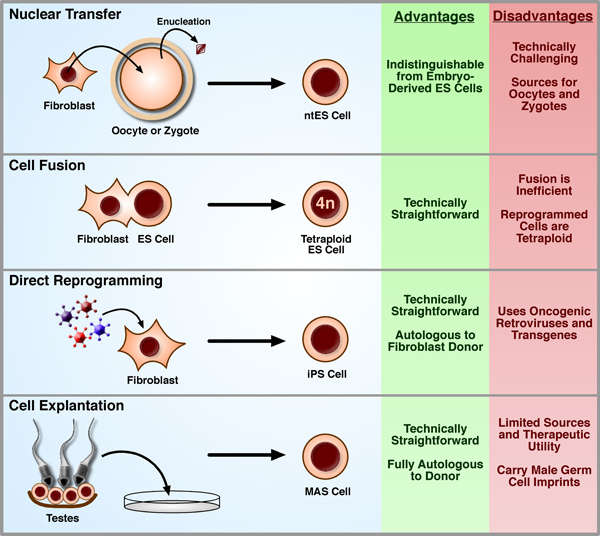
Inducing pluripotency(2)
The second advantage of autologous ES cells over existing lines concerns the ability to create effective disease models. While some success has been reported recently in the in vitro Modeling of degenerative diseases by introducing known Disease-causing alleles into ES cells(Di Giorgio et al., 2007; Nagai et al., 2007; Yamashita et al., 2006), or by using ES cell lines established from embryos following Preimplantation genetic diagnosis(Eiges et al., 2007), such models are severely limited in their scope as they can only investigate the mechanisms of diseases for which causal genetic liaisons have been identified. Unfortunately, however, this is not the case for many conditions. For instance, fewer than 10% of patients with Amyotrophic Lateral Sclerosis(ALS, also know as Lou Gehrig's Disease)suffer from a familial form of the disease with a known genetic correlate(Dunckley et al., 2007). It therefore remains unclear whether recent progress with models studying a handful of known disease-causing alleles is applicable to the vast majority of patients with sporadic forms of this degenerative condition. Disease models using pluripotent cells generated directly from patients with these sporadic conditions could directly address such questions, as well as provide new insights into the mechanisms and progression of such syndromes.
This chapter focuses on the methods and techniques available for the production of Patient-specific pluripotent cells, the promises and limitations of each technology, and a discussion of the current progress towards this goal. Several techniques have been described for restoring developmental potential to a terminally differentiated nucleus(see Figure 2). These include:Nuclear transfer, wherein the chromatin of an oocyte or zygote is replaced with that of a somatic donor cell;
Fusion of somatic cells to ES cells;
Cell-culture-induced reprogramming after explantation of tissue from neonatal or adult testes;
and the Retroviral-mediated introduction of a small number of genes known to play a role in pluripotency. The advances, breakthroughs, and challenges surrounding each of these methods are discussed in detail below.
Figure 2. Methods of nuclear reprogramming, their advantages and limitations.



 留言列表
留言列表
